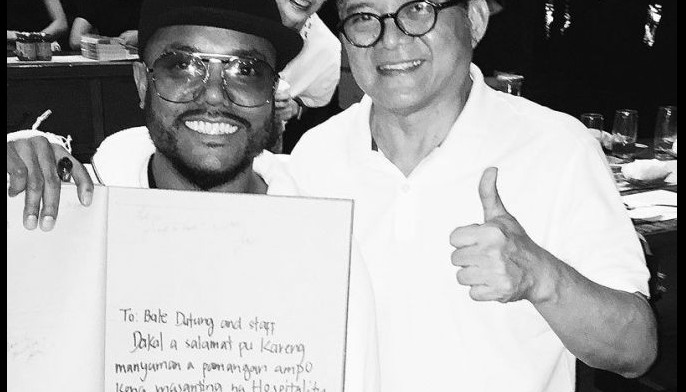Reefbuds to revive Boracay’s coral reefs
MANILA, Philippines - “Nothing is impossible,†seemed to be the mantra of Benjamin Tayag Jr. and Austrian geoscientist Harald Kremnitz when they thought of creating artificial reefs called Reefbuds to help restore destroyed marine life.
“We collaborated on the idea and entered the technology in a contest called ‘Bagong Paraan,’ a World Bank-sponsored contest in 2006,†shared Tayag.
With a grant to finance the production, testing, and evaluation of the technology, the duo’s idea of reefbuds came to life.
“Reefbuds are basically an organic and inorganic composite artificial reef. They are designed in such a way that when you drop them in seawater, they calcify like a natural reef. They mimic the calcification of marine life,†explained Tayag. “Some of the materials used are outer volcanic rock and organic materials like shredded coconut husks, plus other elements, which we patented.â€
The mixture of organic and inorganic materials are coupled with beach sand and cement, and molded into hollow, pyramid-shaped buds, which weigh almost 600 kilograms. Using the dive sites of Anilao in Batangas as their showcase area, Tayag and Kremnitz tested the technology with happy results. “We dropped the material on a totally sandy area, and it came back to life – we had corals growing there,†he said.
The same technology is now being used in the Code Blue Project of Sangkalikasan Cooperative in the Boracay island. Code Blue is a medical term used as an alarm for a patient in need of resuscitation and immediate medical attention, a condition the coral reefs of Boracay are facing, as indicated in various surveys conducted by marine biologists.
Supported by Globe Telecom, the project involves the installation of 5,000 artificial reefbuds in the core zone of the marine protected area, a two-kilometer stretch parallel to Boracay’s shoreline.
Tayag shared, “In Boracay, it’s all coral rubble, acres of them.†Preservation is needed as coral reefs play a vital role in maintaining a sustainable marine ecosystem and contributing to its resilience, productivity and diversity.
Moreover studies in the US show that corals absorb up to 90 percent of wave energy. With the corals in Boracay gone, the beach is vulnerable to the full impact of waves and the backwash that erodes the white powdery sand, which is the lifeblood of Boracay. According to Jojo Rodriguez, vice chairman of Sangkalikasan, the widest beach front in Boracay used to be 40 meters 10 years ago. Now, it is down to an alarming 20 meters.
Reefbuds were installed in the reefs of Boracay in February 2012. According to Tayag, corals start to grow after a year. “You feel that they’re small, but they’re there. Some grow one centimeter a year, some grow two centimeters a year, they’re slow-growing but you can see the progress. Using our technology, you can see the marine ecosystem develop, because it’s not only corals. You have sea anemones, algae, and other marine life that make up the marine ecosystem.â€
Tayag continued, “Comparing reefbuds with other technologies being used such as Biorock technology, you get not only corals and fish but the whole marine ecosystem. Reefbud technology is natural as we put in porous fertile rock and you get coral, fish, algae, sea squirts, crabs, lobsters, octopi, sea urchins and many more. When you drop the reef buds, it’s like a solid sponge. It starts absorbing seawater and all the marine life that is suspended in seawater.â€
Monitoring dives are needed to check on the progress of the marine ecosystem. “These clean-up dives are necessary to remove the debris from the water to keep the marine ecosystem healthy,†said Felipe Huibonhoa, chairman of Sangkalikasan. “While we are doing our best to rehabilitate the island, we also encourage everyone to take action to preserve the future of Boracay and protect its coastal and underwater environment.â€
Globe Telecom, through its corporate social responsibility arm, is one of the Code Blue project partners helping preserve the marine ecosystem of the island. A clean-up dive, which involved close to a hundred volunteers – with Globe employees, subscribers, community divers, and local police – held recently, yielded PVC pipes, broken bottles, plastic rope, and driftwood, which were all sitting underwater.
“Our support for the Code Blue project is more than just volunteerism and caring for the environment and goes beyond support for the clean-up dive. Globe is also bringing in other advocacies as a company – good governance, environmental education, and harnessing the use of our competencies to transform communities where we operate,†shared Rob Nazal, head for Globe Corporate Social Responsibility.
Globe also provided ICT support through a Code Blue hotline (0917-720BLUE) for conservation monitoring purposes. A boat, phone kits, and uniforms were also turned over to Sangkalikasan and its partners to enable easier coordination and reporting, and real-time feedback on conservation and marine protection efforts.
- Latest



























